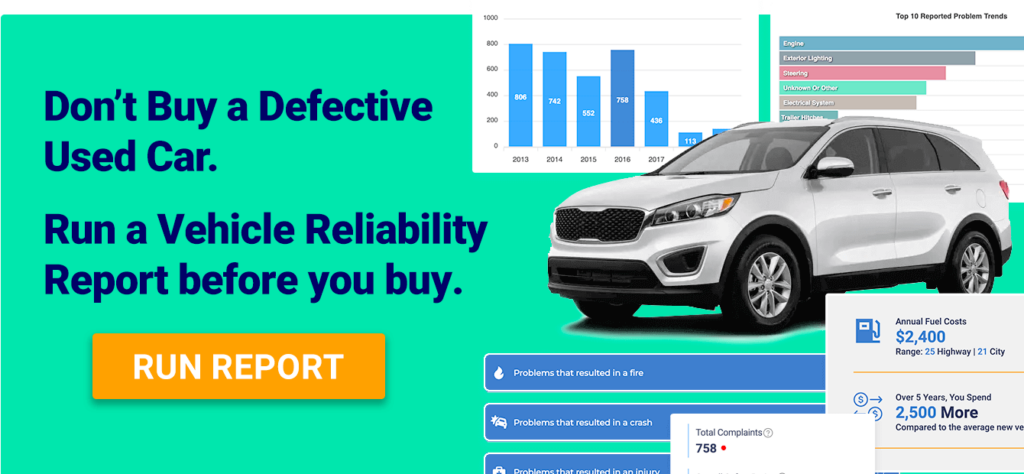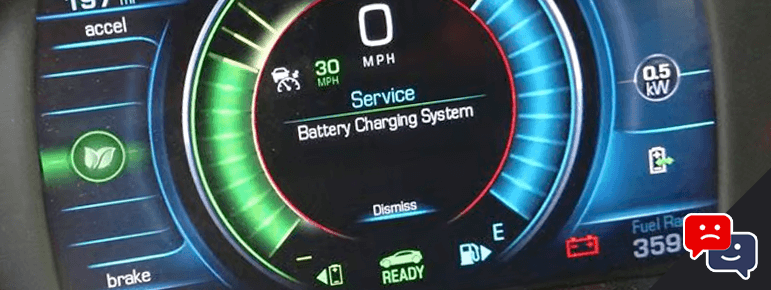Last Updated on April 26, 2024
The service battery charging system is an error message that pops up on General Motors (GM) vehicles in the instrument cluster. But what does this message mean, and should you be concerned?
The “service battery charging system” light warns of potential issues in the vehicle’s charging system, like loose connections, a faulty alternator, or battery issues. Driving with this light on is unsafe, as it can lead to power loss and breakdowns, requiring immediate attention.
It’s not safe to drive for a long period of time when you see this message appear. Because your vehicle is warning you that you may need a new battery, has a faulty alternator, or has wiring issues.
Either one of these problems could lead to a break down at any time. So when this message on your information center appears – treat it with urgency and head to your nearest mechanic quickly.
Simply put, your vehicles service battery charging system is the power source behind your car. It requires a special combination of an alternator, battery, ECU, fuses and wiring.
It’s what keeps the lights shining, entertainment system humming, and all sorts of important electronic vitals running on modern vehicles.
Let’s first dive into service battery charging system means, and what steps you can take as a GM car owner to fix the issue.
What Should You Do If Service Battery Charging System Warning Happens?
Right off the bat, if you are seeing this warning message, you will want to pull off to a safe place and take a look under the hood of the car.
Once parked, turn the vehicle off and pop the hood. Next, check that the battery connections are securely connected to the battery. Give both the positive cable and negative cable wires a little wiggle to see if they move at all. If they do, then that’s the problem. Access to some basic tools to tighten each wire to the battery will solve this warning message.
However, if this doesn’t help, you will need to run a diagnostic test on your car’s charging system. In most cases, this can be done by using a multimeter.
How to Fix Service Battery Charging System
Repairing the charging issue involves the use of an OBDII code reader and multimeter. Both will help identify the reason for the error code.
First, you will want to the test the battery voltage with a multimeter (also referred to volt meter). When the vehicle’s engine is not in operation, the voltage of a fully charged car battery registers at 12.6 volts. This is commonly referred to as “resting voltage.”
If the battery voltage registers at or below 12.2 volts, you may have a bad battery. But, once the engine springs to life, the battery voltage should increase around or between 13.5 to 14.5 volts. If the battery power doesn’t increase, it’s possible then the alternator is bad.
However, if you aren’t familiar working with electrical components, leave this one to the professionals.
They’ll scan for error codes and perform tests on car’s electrical system for bad amp fuses, wires, cables, or alternator.
Based on their assessment, they’ll replace with a new battery or new alternator, then reset the check charging system light.

What Causes the Service Battery Charging System Message?
When your car’s dashboard prompts you with the service battery charging system message, it indicates that an essential system in your car isn’t getting enough power.
Your car is alerting you that there is something not quite right with the battery charging system.
However, the implications may be minor, but it’s best to get the car looked at right away. The last thing you want is a simple loose wire to leave you stranded on the side of the road.
The following can cause this message to appear:
- Bad alternator – If mechanical power is not being converted to electrical energy, the battery charging system cannot provide adequate power to perform functions in the car. A new alternator is needed to resolve the charging issues.
- Battery problems – Naturally, if the battery isn’t storing electricity, then the reserves cannot be used for car functions. Then the vehicle’s battery needs to be replaced.
- Serpentine belt problems – The serpentine belt spins the rotor to generate electricity, and if the belt is worn or loose, electricity generation will too be reduced.
- Loose connectivity – Bad cables, fuses, or wires can disrupt the flow of electricity, causing power supply issues.
- Faulty ECU – A bad or faulty electronic control unit is the brain of the car. When this goes bad, you will experience a handful of problems with the vehicles electronics.
How Does The GM Battery Charging System Work?
The battery charging system is one component of the complex electronic system that runs your car and helps perform various functions. These functions include the ignition, headlight, navigation, entertainment, and, of course, the battery.
Simply put, the battery charging system provides energy for these functions. Most importantly, the battery charging system plays a role in supplying power to the alternator, battery, and control module. All critical parts to a car’s normal function.
How it works is pretty simple. First, the alternator converts mechanical energy from the crankshaft to electrical energy.
Then, the electronic control unit regulates and distributes that electrical power to other components. The battery, of course, is the storage space for these energy reserves.
Final Thoughts
To sum up, the service battery charging system message can really put a damper on your day, but it’s important to pay attention to what your car has to tell you.
The problem usually points to a fault in the charging system of your vehicle such as the alternator, battery, battery terminals wires or cables, or even just a simple blown fuse.
However, this isn’t something you should ignore as it could pose a great danger to yourself and passengers if left unchecked.
Therefore, make sure to get your car serviced as soon as possible.
And remember, it’s not safe to drive for long when this message appears.

Managing Editor
Christopher is an automotive technical writer. When he’s not at the local autocross event, he can often be found working on one of his cars. Specializes in automotive class action law, industry trends, and automotive maintenance. Email me direct, or learn more about us

